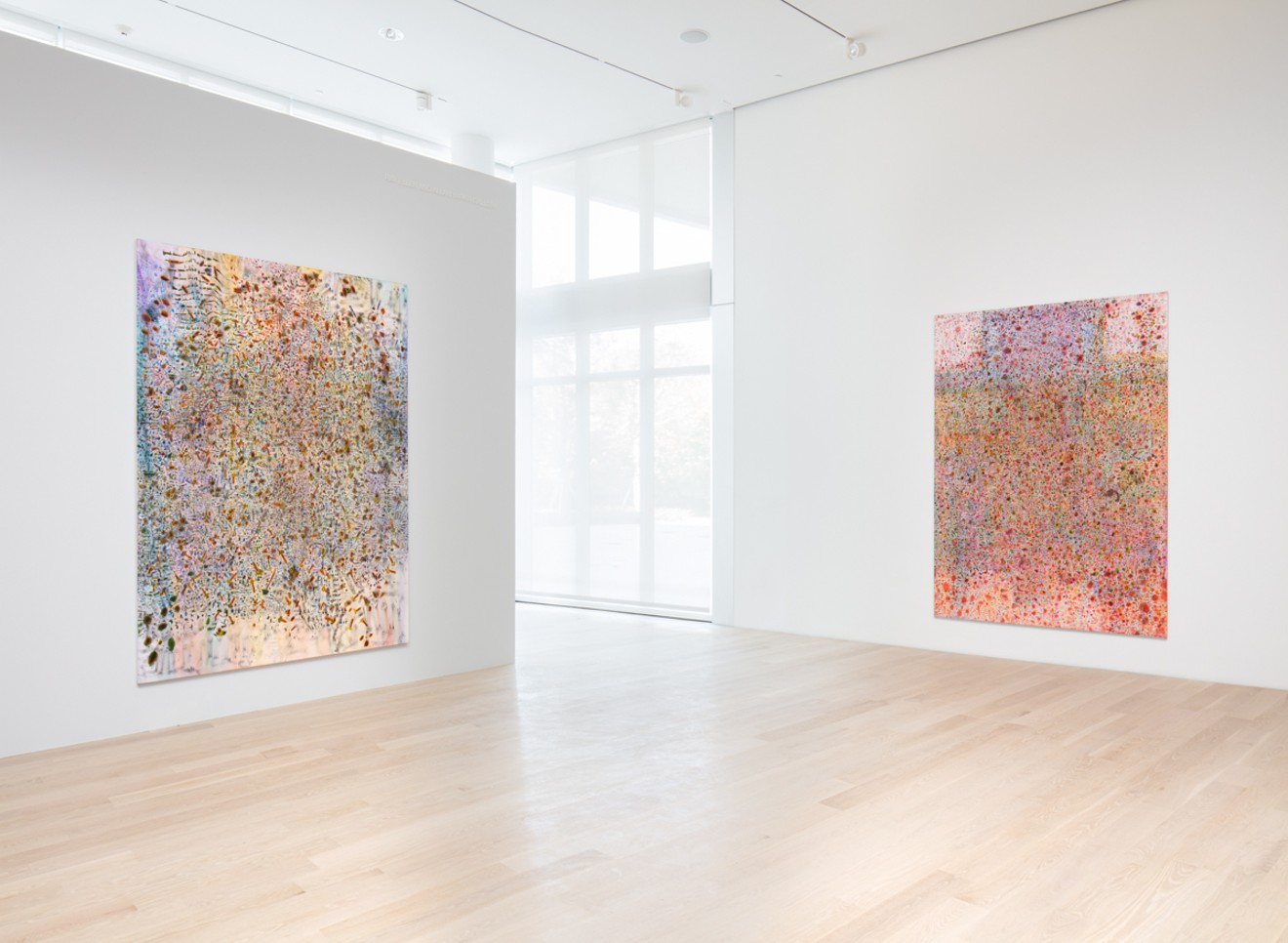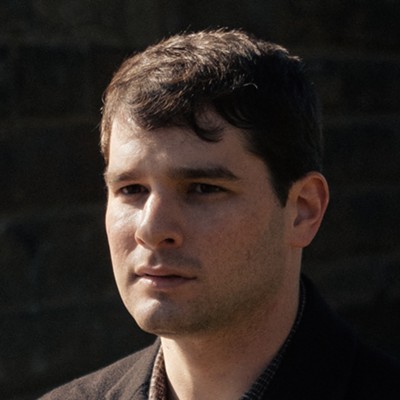On the Institute of Contemporary Art Miami’s third floor, visitors are greeted by two nearly identical paintings by one of the most famous artists of the 20th Century. They depict the same image — an artist drawing a woman in his studio — and make use of the same vibrant color palette. A viewer can notice subtle distinctions in the lines and shapes used to build the scenes. But the style is impossible to confuse with any other artist's: They were painted by Pablo Picasso.
“You don’t see Picasso in Miami very often,” says Alex Gartenfeld, chief curator of the Institute of Contemporary Art (ICA).
The museum chose the two paintings, part of a series made late in the artist’s life, to open its inaugural exhibition, "The Everywhere Studio," which explores the spaces where artists work. Pieces by several other masters of modern art from the 1960s to today are displayed on two floors. Viewers will come face-to-face with an Andy Warhol dance diagram, the brilliant blues of Yves Klein, and a cartoonish portrait of Roy Lichtenstein’s studio. In other words, it’s the most ambitious project the young institution has staged since forming in late 2014.
Initially taking up space in the Moore Building on NE Second Avenue in the Design District, the ICA has a new home that stands only a few hundred feet away on NE 41st Street, still within the upscale neighborhood defined by its luxury retailers and restaurants. Being located down the street from the Tom Ford store doesn’t mean the museum wants to cater exclusively to the elite, however.
For one, admission is free to all, meaning anyone can stare at those Picassos for hours. Gartenfeld also says the ICA will try for three exhibition turnovers per year, meaning the 37,500-square-foot building will be continually refreshed with new art.
"These different rotations essentially mean that we're never closed," he says.
It’s an egalitarian effort to place Miami in a league with cities such as New York and Tokyo, where locals can visit museums on their lunch breaks. You can sense that goal as you approach the ICA's new building, which, unlike the palatial park setting of Pérez Art Museum Miami, greets visitors with a towering façade of steel triangles and a gleaming white atrium designed by the Spanish architecture firm Aranguren + Gallegos. Stationed across the way from an equally grand parking garage, the structure puts you in a concrete canyon that’s more MoMA than Met; in comparison with the mostly one-story shops, homes, and converted warehouses of Wynwood and Buena Vista, it’s one of the few spaces uptown that feels genuinely urban.
But that’s just out front: Past the atrium is the ICA's outdoor sculpture garden, where greenery shares space with installations of stone, wood, and metal. The centerpiece is Dr. Pepper, a metal lamppost twisted into a crooked star shape created by Mark Handforth and commissioned specially for this space. Thanks to the atrium creating a straight line of sight from the entrance to the garden, the work is visible from the street.
“One of the things I like is that sense of being pretty connected to the street, kind of connected to the world around the ICA,” says Handforth, who lives in Coconut Grove with his wife, fellow artist Dara Friedman. “I think it should be a great connector to the community, hopefully.”
Handforth has lived and worked in Miami since 1992 and has seen the city change drastically for artists. He believes the influx of curators, gallerists, and institutions is good for young artists despite climbing rents pushing them out of central neighborhoods such as Wynwood.
Emerging artists are especially important to the ICA, which has dedicated the first room on the ground floor to upcoming local and regional artists. The first occupant is Tomm El-Saieh, who is using the project space to display a quartet of large abstract paintings that cover the walls from top to bottom. El-Saieh painted the gallery walls a subtle blue to bring out the vivid colors and patterns on the canvases.
“Those are little, subtle things that I'm superinterested in. When you're working with abstraction and color, you're kind of obviously investigating the possibilities of color,” El-Saieh says. “I wanted to have a feeling of immersive-ness, of creating a sense of an environment when you come into the room.”
Though the pieces mark El-Saieh’s first time exhibiting in a museum, he has an extensive background in the arts. He spent a significant part of his childhood in Miami, but he still remains connected the art scene in Haiti, where he organizes exhibitions for his family’s gallery, one of the first to open in Port-au-Prince.
He’s also excited to see the ICA making forays into the island nation's art scene.
“Alex and I went down to Haiti to do studio visits, to check out the scene there,” El-Saieh says. “We have our own art history that doesn’t necessarily collide with the Western tradition, but our art-making is very strong in Haiti, for sure.”
It's hoped these new artists will help the ICA add to Miami’s art legacy and establish a unique voice for the city. But what could that voice be? Handforth, who grew up in Hong Kong, another tropical, seaside city, has some ideas.
“It’s very much what cities of the future, I think, will look like, what I hope they’ll look like," he says. "You have people basically from all over the place, all sorts of disparate things going on, and that becomes the voice.”
Institute of Contemporary Art. 61 NE 41st St.., Miami; 305-901-5272; icamiami.org. Miami Art Week hours: Wednesday, December 6, through Sunday, December 10, 9 a.m. to 8 p.m. Regular hours: Tuesday through Sunday 11 a.m. to 7 p.m.
Read more about Miami Art Week's fairs, museums, galleries, public art, parties, plus more about the new ICA Miami and art by people of color, in this week's issue of New Times.
[
{
"name": "Air - MediumRectangle - Inline Content - Mobile Display Size",
"component": "19274298",
"insertPoint": "2",
"requiredCountToDisplay": "2"
},{
"name": "Editor Picks",
"component": "17482312",
"insertPoint": "4",
"requiredCountToDisplay": "1"
},{
"name": "Inline Links",
"component": "18711090",
"insertPoint": "8th",
"startingPoint": 8,
"requiredCountToDisplay": "7",
"maxInsertions": 25
},{
"name": "Air - MediumRectangle - Combo - Inline Content",
"component": "17482310",
"insertPoint": "8th",
"startingPoint": 8,
"requiredCountToDisplay": "7",
"maxInsertions": 25
},{
"name": "Inline Links",
"component": "18711090",
"insertPoint": "8th",
"startingPoint": 12,
"requiredCountToDisplay": "11",
"maxInsertions": 25
},{
"name": "Air - Leaderboard Tower - Combo - Inline Content",
"component": "17482313",
"insertPoint": "8th",
"startingPoint": 12,
"requiredCountToDisplay": "11",
"maxInsertions": 25
}
]













